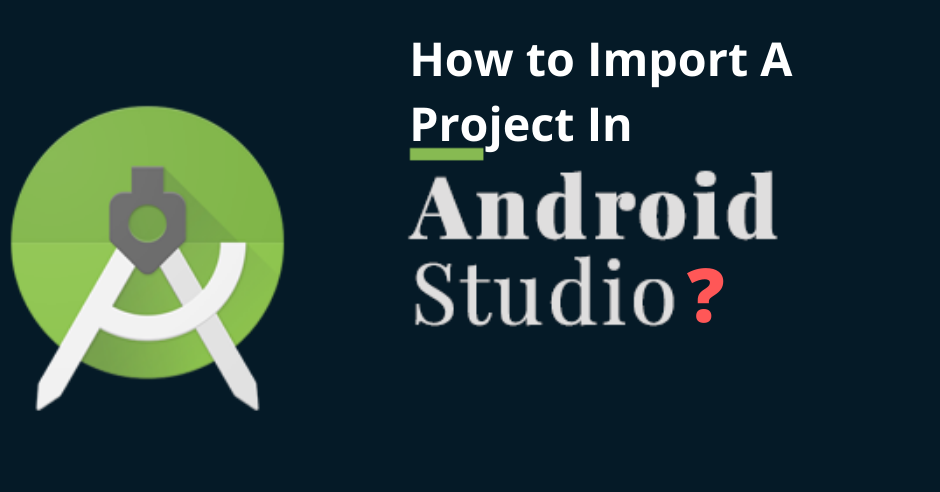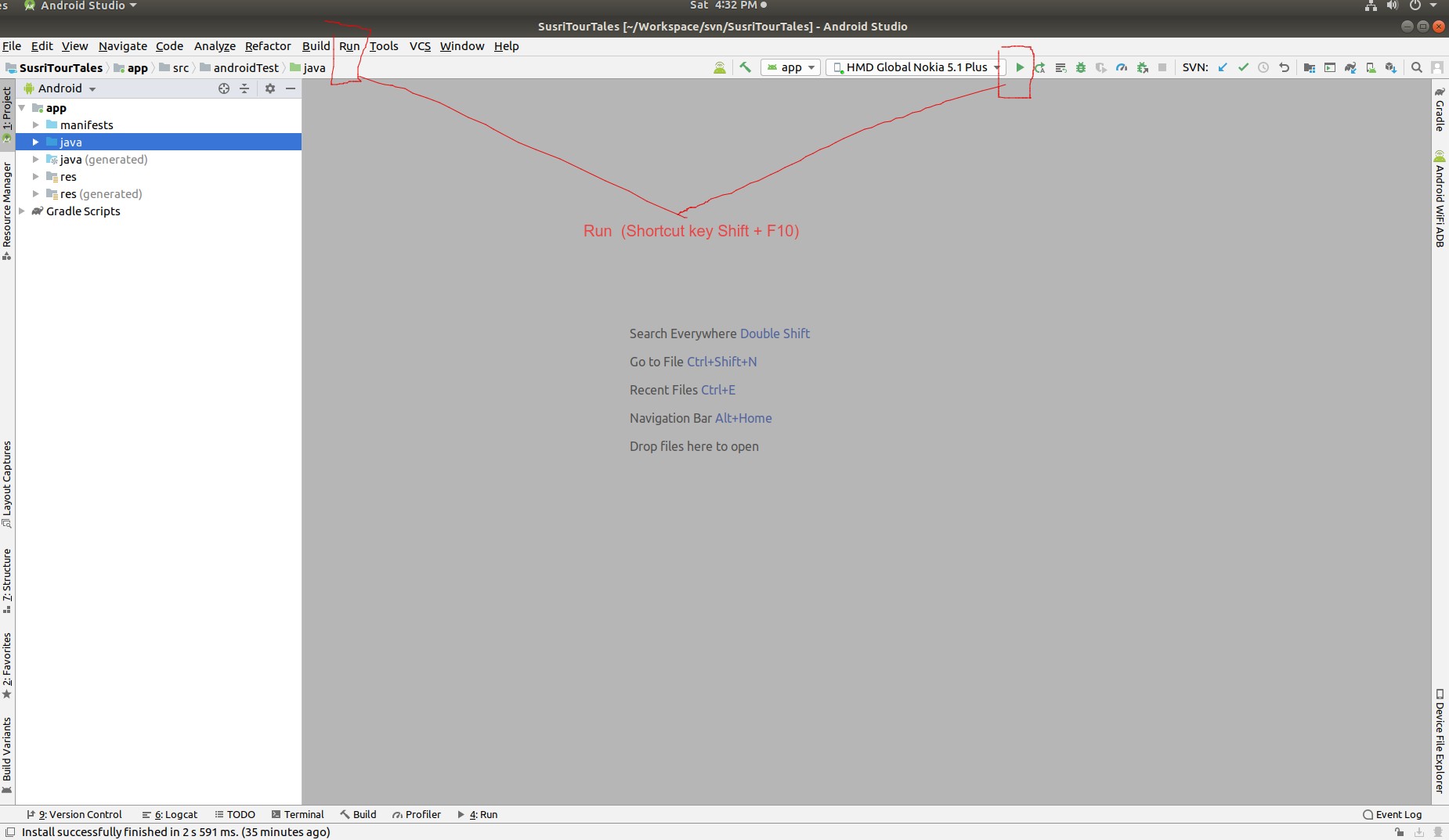
How to Import Project in Android Studio
Migration of your projects to Android Studio needs you to adapt to a new project structure, IDE functionality, and build system. Suppose you are migrating a project in Android Studio from Eclipse. In that case, Android Studio will offer you an import tool to move the existing code into Android Studio import project and Gradle-based build files. Before discussing further on how to import project in Android Studio? Let us understand what Android Studio is.
What is Android Studio?
The official Integrated development environment(IDE) for Android app development is Android Studio. It is based on Java integrated development environment for Software called IntelliJ IDEA. It includes code editing and developer tools. Furthermore, it utilizes code templates, GitHub integration, emulator, and support app development within the Android operating system.
Now let's discuss how you can download Android Studio.
How to Download Android Studio?
It is easier to download and utilize Android Studio. Its rich UI development environment with templates provides its new developers to create phone and tablet solutions for Android. For creating Android apps or solutions, you need Android Studio. So to download Android Studio, you need to follow the below steps -
- Visit the official website of Android studio in your browser.
- You will find the option to click and download this software.
- A file will be downloaded to your system—the Android Studio-ide.exe file. Double-click on this file.
- The setup for Android Studio will display on your computer’s screen, and click on next to proceed to the next step.
- Choose the components required for you to install and then click on Next.
- It is your turn to browse the location where you want the Android Studio to be downloaded. You can then click Next to proceed to another step.
- Pick the start menu folder for this software’s shortcut and click on the installation option to proceed.
- When you successfully install the Android Studio, click on the Next button and then the finish button to move forward.
- Now, finally, your Android Studio welcome screen appears on the screen.
- These steps include downloading this software to help you create Android applications or solutions.
Steps To Import Project in Android Studio
Now, let’s learn here how to import project Android Studio. There are 4 steps mentioned here to place the project in Android Studio.
Open your Android Studio and if any project is opened, just close it (Go to File? Close Project) then you'll see a small window like this:
Step: 1 Open an Android Studio project
To import a project in Android Studio, you should open Android Studio Project: Click on “Open an existing Android Studio project” to open the Android Studio Import Project.
 Select your Android Studio Project directory from the 'Open file to Project' dialogue and click on the OK button.
Select your Android Studio Project directory from the 'Open file to Project' dialogue and click on the OK button.
- Wait until the project sync and builds project in Android Studio.
Step: 2 Open Gradle or Eclipse ADT Project
Click on “Import Project(Gradle, Eclipse ADT etc)” to open Eclipse build project for placing the project to import in Android studio without fail.
- Here, browse your project in Android Studio by navigating the location where you kept your project, your project’s folder will appear with an Android logo on it like this:

- Select the app and click OK, this will take some time for the Gradle to build, wait for the loading time. (You might get an error here stating the different SDK location, the error looks like this):

- In case of the above error, just go to Project Directory, and you’ll then find the file named “local.properties” in the root folder of your project. Open this file and scroll to the last 2 lines “ndk” and “SDK” and change the location with the one of your SDK and save the file.
- Again open the Android Studio Project or else, if already opened in Android studio, go to Gradle? Rebuild.
Step: 3 To Build and Run your App
In the toolbar, select your app from the run configurations drop-down menu.

- From the target device drop-down menu, select the device you want to run your app.

Note: If you don't have any devices configured, then you need to either connect a device via USB or create an AVD to use the Android Emulator
- Click on the Run button in Toolbar or Select the Run menu in the menubar

Step: 4 Edit Project

By default, while you import android studio project, the Android Studio displays your project files in the Android view. This view does not reflect the actual file hierarchy on disk, but is organized by modules and file types to simplify navigation between key source files of your Android Studio Project, hiding certain files or directories that are not commonly used. Some of the structural changes compared to the structure on disk include the following:
- Shows all the project's build-related configuration files in a top-level Gradle Script group.
- Shows all manifest files for each module in a module-level group (when you have different manifest files for different product flavors and build types).
- Shows all alternative resource files in a single group, instead of in separate folders per resource qualifier. For example, all density versions of your launcher icon are visible side-by-side.
Within each Android app module, files are shown in the following groups:
- Manifests: Contains the AndroidManifest.xml file.
- Java: Contains the Java source code files, separated by package names, including JUnit test code.
- Res: Contains all non-code resources, such as XML layouts, UI strings, and bitmap images, divided into corresponding subdirectories. For more information about all possible resource types, see Providing Resources.
- Gradle Scripts: Two types of Gradle file are used in android projects One type is Project level Gradle which contains application repositories, dependencies, and project-level variables, Second type are modules level Gradle which contain app version name, version code, min version, application ID, dependencies for this module, debug and release build types, build flavors, etc
How to import a Project in Android Studio from GitHub?
The cloud-based platform that is built around the Git tool is GitHub. Therefore, it is required to upload your android project on this platform. A few times, importing the already stored project on GitHub is necessary for testing or learning purposes. Here is the step-by-step process to import the Android Studio project to this platform.
- First, open project in Android Studio, for that you need to go to file, click on New, and then project from version control.
- A screen will be displayed when you click on the project from version control. In that, drag the menu down and choose Git.
- Later paste the link in the URL and pick your directory. Finally, click on the clone button.
Conclusion
It is a simple process to migrate your project to Android Studio. So, follow these steps, which show you how to import project in Android Studio.
FAQ
Is Android Studio for free?
Yes, Android Studio is free to download and utilize. It possesses a rich UI development environment with templates to provide new developers with the launching pad for Android app development.
What language is used in Android Studio?
Java is the language that is used in Android Studio. Because it is the primary language for Android Application Development, it is also beneficial if you have Knowledge of XML.
Is Android Studio Coding?
Android Studio supports C/C++ code utilizing the Android NDK (Native Development Kit). However, it means you will write code that will not run on Java Virtual Machine. Instead, it runs natively on the device, which offers you more control over certain things like the allocation of memory.

















 Whatsapp
Whatsapp
 Email
Email


